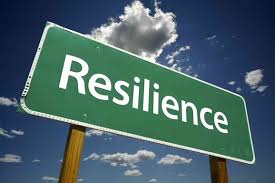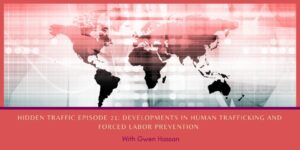Boards of Directors are coming under increased legal and regulatory scrutiny. Courts in Delaware, from the Delaware Court of Chancery to the Delaware Supreme Court, have continued to refine and expand the Caremark Doctrine. Boards are on notice they must actively engage in compliance and risk management oversight. One of the continuing challenges for boards in this era of increasing responsibility is getting the right persons on boards. I was therefore interested in a recent MIT Sloan Management Review article, entitled Meet the New Board — Same as the Old Board, where authors Cynthia E. Clark and Jill A. Brown posit that many companies are just going through the motions of recruiting more diverse board members. Moreover, they advocate the time is now to get serious about board refreshment.
In addition to these new legal requirements, other stakeholders are pushing for public companies to refresh their boards to achieve greater diversity. Shareholders have been leading the way at least a dozen public company boards since mid-2020, “accusing them of failing to broaden out with greater diversity.” Institutional investors and investment managers such as BlackRock, Inc. have voted “against more than 1,800 directors at close to 1,000 companies for insufficient action to increase board diversity.” The proxy advisory firm Institutional Shareholder Services Inc. “now recommends withholding votes from, or voting against, directors with nominating or governance roles on boards that don’t have at least one non-White director and at least one woman.” Finally, the Nasdaq Exchange, with the approval of the Securities and Exchange Commission (SEC), “will soon require listed companies to have at least two demographically diverse directors (or explain why they don’t).”
Yet board refreshment and diversity is not simply something driven by regulators or changes in the law. The authors believe, “diverse boards representing a broader range of experience may be better able to quickly navigate volatile business environments and unexpected disruptions, such as a global pandemic.” They cite to “recent data from BoardReady, a nonprofit group that promotes corporate diversity, found a positive correlation between the diversity of S&P 500 boards and revenue growth during the pandemic.” So, if the law, regulators, stakeholders and the market all believe in board refreshment, why is not this effort moving forward with greater speed and urgency?
The authors found two key reasons why many companies still struggle to appoint directors who are women, people of color, or members of other underrepresented groups. (1) They found “that corporations go through the motions of refreshment but ultimately accomplish little, replacing an outgoing director with someone similar rather than with a person who has a different professional background, identity, or perspective.” (2) Perhaps not too surprisingly, they also “found that the independence of the board’s nominating committee is often compromised by substantial CEO influence over the process, perpetuating a tendency to select directors who reflect the opinions, and often the identity, of senior management.” When these factors converge, board independence and effectiveness in overseeing management of the company is compromised, which can negatively impact corporate performance.
The authors developed four actions which they believe can allow a company to turn around these areas in board refreshment. How can boards avoid these pitfalls and achieve meaningful refreshment? Leaders who want to change the culture of the board should take the following actions.
Diversity of identity and thought
Obviously, there are certain easily verifiable and achievable standard boards can articulate around diversity, including gender, race, and other such attributes. They can then evaluate nominees against that definition and for diversity of through as well. As the Compliance Evangelist, it would surprise you that I believe more former Chief Compliance Officers (CCOs) and compliance professionals should be nominated to boards. The same is true in other areas of risk management, cyber, export controls and trade sanction and even supply chain. The authors state, “Boards should also encourage nominees to talk about what type of diversity they believe they would bring to the board.” Documenting these actions will serve companies well, as multiple stakeholders are increasingly demanding public disclosure of this documented information.
Refresh frequently
It is clear that a long-standing board is not the best system to have in place as members gradually lose effectiveness and long “tenures tend to compromise the true nature of director independence.” This leads the authors to suggest boards “set earlier mandatory retirements and shorter term limits.” Some investors oppose the re-election of directors who have served on a board for more than nine years, while others may limit service to seven years. Interestingly, the authors note, “in industries where business models and operational contexts change fast, tenures might need to be even shorter.” Rotation of members and a staggered hiring tenure can also be used.
Limit CEO involvement
Given the negative impact of a Chief Executive Officer (CEO) in the process of selection, it is not too surprising the authors posit “the CEO should not have a vote in the hiring decision, implied or otherwise.” To enhance this position, they also write, “We think boards could normalize the use of executive sessions and reduce any stigma associated with them by holding them more frequently, including when evaluating director candidates.” They noted the “New York Stock Exchange (NYSE) requires executive sessions once a year and Nasdaq at least twice a year, although neither specifies that the sessions be used in the nominee search and hiring process.”
Changing culture
Every CCO and compliance professional who has dealt with a board understands refreshment and corporate culture are tied together. The very act of refreshing an old, stagnant board with new people and ideas changes the culture of a board. That change permeates down into an organization. It is almost axiomatic that “A group of directors with similar experiences, opinions, skills, and identities will naturally tend toward consensus much too often.”
A CCO should work to get directors “to think about and freely discuss the existing board culture, including their own behavior and whether it needs to change.” You could also encourage a board to hire “a consultant to help diagnose and possibly change your board culture.” Finally, work to “Encourage board members to voice their opinions, especially when they challenge the consensus.” As with most things in life, if you do what you did, you get what you got. The same is true for boards. If you replace one old white guy who was an executive in your industry with another old white guy who also is from the same industry, you have not refreshed your board member, you have simply replaced one for another. In this time of near constant change, boards need to be able to respond quickly and nimbly. That is going to take new blood into your Board of Directors.
And do not forget the ‘G’ in ESG.










